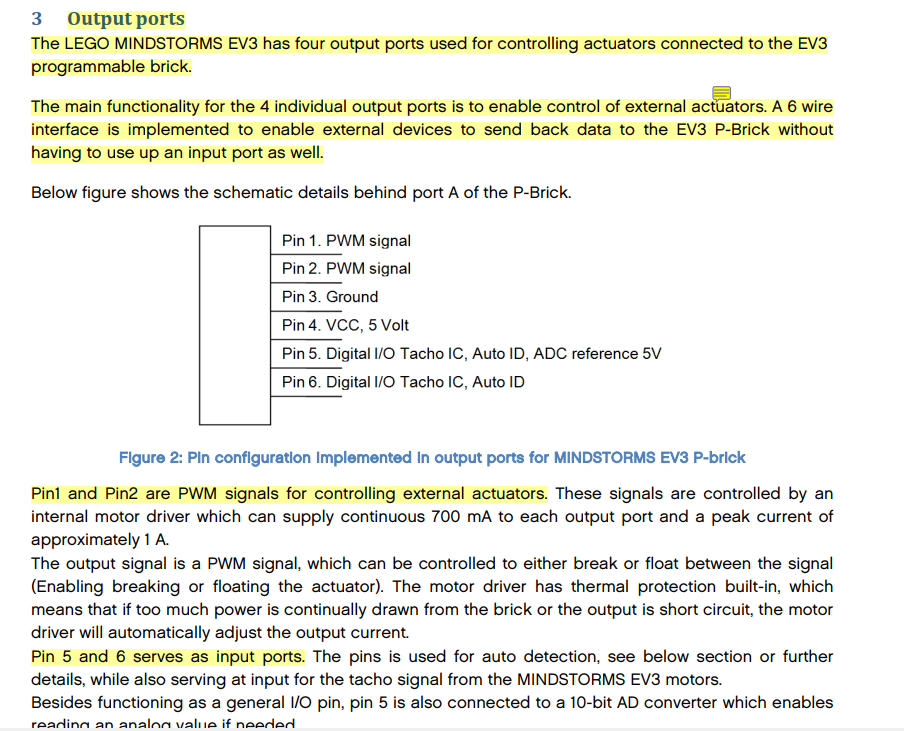Other Parts Discussed in Thread: DRV8301
Tool/software: Code Composer Studio
Dear TI team,
I want to connect EV3 Intelligent Brick (lego) to my F28069M launchpad,
Here are the signals behind the output port of mindstorm I want to connect to,
Is it possible to connect pin 1 & 2 (PMW signals), 5 & 6 (Digital I/O) to the launchpad ? (which pins are they). If you could point them out please.
Thanks in advance,
Best Regards,


